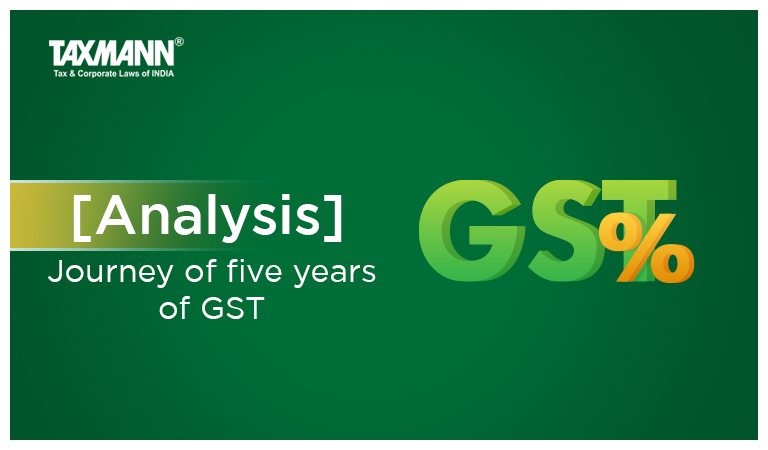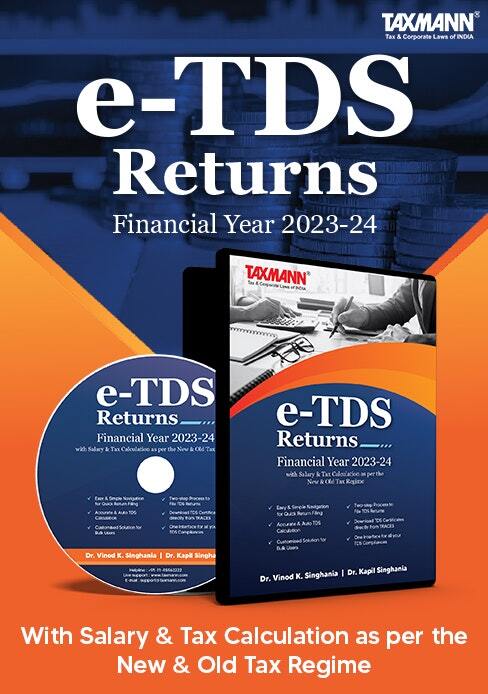[Analysis] Journey of five years of GST
- Blog|News|GST & Customs|
- 4 Min Read
- By Taxmann
- |
- Last Updated on 26 July, 2022

CA Manoj Nahata – [2022] 140 taxmann.com 45 (Article)
GST law is implemented in our Country with effect from 01.07.2017. It is now five years have been completed since the introduction of this new law. In these five years we have seen many ups and downs in this law. Rather it would not be incorrect to say that this law is now more popularly known as ‘Business Reform’ instead of a ‘Tax Reform’. This law has changed the mind-set of the taxpayers. Persons who hesitated in the earlier regime to file returns timely are now giving first priority to the GST compliance only. Now, they have become very much serious and concerned in tax compliance. This experience is completely different from the previous tax regime. Today filing of tax returns on the due dates of 11th and 20th of each month is the topmost priority for the tax payers. The main reason for such change is the fear of paying late fee and non-appearance of input on the portal of the buyer. GST has changed the behavioural aspect and transformed the thought process of the people. Taxpayers have now moved towards the digital era and making their transactions through computer only. This has also somewhere strengthened the dream of “Digital India’ visualised by our Hon’ble Prime Minister. GST has also given a major boost to the ‘Make in India’ initiative of the Government of India by making the goods and services produced in India competitive in the national and international market.
On the occasion of completion of five years of GST, the author through this write up has made an attempt to portray Five Benefits offered by GST, Five Problems faced in GST and Five Suggestions for improvement of GST.
Five Benefits under the GST are as follows:
1. Freedom from frequent visits to the Tax Department: Five years ago, no one could have imagined that the businessman can run their business even without visiting tax department. Traders were supposed to visit Tax department on almost daily basis for getting Permits, Tax Clearance Certificate, ‘C’ form, and ‘F’ form etc. This was not only consuming their valuable time but also increased cost. But now this picture has completely changed. Today, all the activities can be done online sitting at home at one’s finger tips. Making E-invoice, E-way Bills, applying for registration and amendments, reply to notice etc. etc. is being done online in a hassle-free manner.
2. One Nation -One Tax implemented in the whole of Country: GST has subsumed various local State laws like -VAT, Entry Tax, CST, Luxury Tax etc. and implemented only one law in the Country from Kashmir to Kanyakumari. Further all the goods and services are now being taxed at the same rate. Further same return is being filed across all the States through Common portal only. This has integrated the scattered tax laws in different States into one law. Now, one can file its tax returns from anywhere at any time without even appointing separate tax consultant in each State. This has resulted into One-Nation-One Tax -One Market.
3. Proficiency in Information Technology: In GST, each and every activity is taken care by the computer only. So now taxpayers have to upgrade themselves in learning computers and working in IT environment. This has made them Tech-savvy and their skills or knowledge has also increased significantly while working in digital mode. So, it would not be incorrect to say that the GST has also made taxpayers literate in the sector of Information & Technology. Apart from this, the information technology industry of our country has also got a boost and of late India has emerged as a great service provider in this field.
4. Benefits offered to Micro, Small and Medium Enterprises: MSME sector is the back bone of our Country. This sector has always received best of the attentions from the Govt. since the inception of the GST law in the Country. The Govt. was always seen very active and keen to amend the GST law for ease of doing business and for the benefits of MSMEs. Take the examples of – Facility to file quarterly returns, Introduction of composition scheme for the service providers, Waiver of the late fee, Exemption from filing GST Annual return, Exemption from GST audit, Relaxation in putting HSN codes in tax returns etc. etc. which are meant for the benefits of MSMEs only. The aim of the Govt. at all points of time is to protect their interests and boost MSME sector.
5. Scrapping of Check Gates and Reduction in Cost: The Central Govt. had long pending agenda of scrapping all the check gates which were existed in the erstwhile law of VAT in the Country. The Govt. was of the firm view that such check gates were not only increasing the delivery time of the goods but were also increasing the cost significantly. Accordingly, as per the plan of the Central Govt. all the States have scrapped /removed different check gates established in their respective States. This has enabled the free movement of goods and delivery time is also reduced. We get rid of the long queue at the check gates and as a result average delivery time is very less as compared to pre-GST regime. This has also resulted in maintaining or keeping low stock and which further minimised working capital requirements for the business houses. One of the important features of GST law is that a trader can avail input tax credit of services (except blocked items) and a Service provider vice-versa can also avail input tax credit of goods (except blocked items). This has removed cascading effects of tax and reduced cost.
Click Here To Read The Full Article
Disclaimer: The content/information published on the website is only for general information of the user and shall not be construed as legal advice. While the Taxmann has exercised reasonable efforts to ensure the veracity of information/content published, Taxmann shall be under no liability in any manner whatsoever for incorrect information, if any.

Taxmann Publications has a dedicated in-house Research & Editorial Team. This team consists of a team of Chartered Accountants, Company Secretaries, and Lawyers. This team works under the guidance and supervision of editor-in-chief Mr Rakesh Bhargava.
The Research and Editorial Team is responsible for developing reliable and accurate content for the readers. The team follows the six-sigma approach to achieve the benchmark of zero error in its publications and research platforms. The team ensures that the following publication guidelines are thoroughly followed while developing the content:
- The statutory material is obtained only from the authorized and reliable sources
- All the latest developments in the judicial and legislative fields are covered
- Prepare the analytical write-ups on current, controversial, and important issues to help the readers to understand the concept and its implications
- Every content published by Taxmann is complete, accurate and lucid
- All evidence-based statements are supported with proper reference to Section, Circular No., Notification No. or citations
- The golden rules of grammar, style and consistency are thoroughly followed
- Font and size that’s easy to read and remain consistent across all imprint and digital publications are applied





